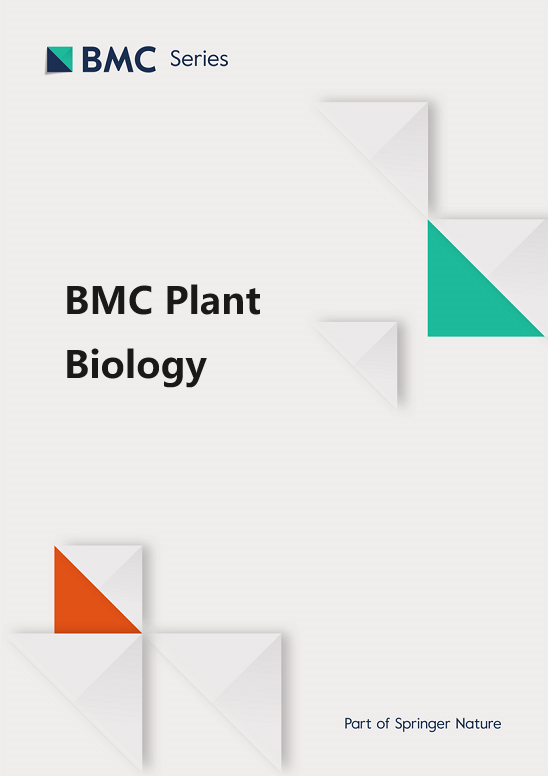茉莉花的细胞质基因组揭示了不同的亚单体基因组构象和源自叶绿体的大型核插入物
IF 4.3
2区 生物学
Q1 PLANT SCIENCES
引用次数: 0
摘要
茉莉花(Jasminum sambac)是一种广为人知的观赏植物,因其芳香的花朵而备受青睐,它有三种花朵表型:单瓣(SP)、双瓣(DP)和多瓣(MP)。由于缺乏对 J. sambac 线粒体基因组(有丝分裂基因组)的详细表征和比较,阻碍了对茉莉花不同花型的遗传和结构多样性的探索。在这里,我们用 PacBio 读数从头组装了茉莉花典型表型的三个有丝分裂基因组:"SP"、"DP "和 "MP-hutou"("HT"),用 Illumina 读数组装了 "HT "叶绿体(cp)基因组,并用读数图谱和荧光原位杂交(FISH)进行了验证。这三个有丝分裂基因组呈现出不同的亚基因组构型,分别有两条、两条和四条自主环状染色体,大小从 35.7 kb 到 405.3 kb 不等。每个有丝分裂基因组包含 58 个独特的基因。在非规范起始密码子 TTG、CTG 和 GTG 的上游发现了具有保守 AAGAAx/AxAAAG 主题的核糖体结合位点。三个有丝分裂基因组的基因组内容相似,但结构不同。结构上的差异主要归因于由一个大的(约 5 kb)正向重复对和几个短的重复对介导的重组。除了 "HT "中一个 19.9 kb 的反转外,三个茉莉花 cp.我们在 "HT "核基因组的 Chr7 上发现了一个 14.3 kb 的 "HT "特异插入片段,由两个 7 kb 的叶绿体衍生片段组成,其中有两个完整的 ndhH 和 rps15 基因,聚合酶链式反应(PCR)进一步验证了这一点。与其他油茶科物种相比,该系统发育良好,表明 J. sambac 的有丝分裂基因组进化速度更快,并勾勒出唇形科植物内部的有丝分裂基因组进化轨迹。所有证据都支持 "DP "和 "HT "是从 "SP "进化而来,而 "HT "是 "DP "的最新衍生物。茉莉花细胞器基因组的全面表征增加了我们对茉莉花不同性状背后的结构多样性和进化轨迹的了解,为深入探索机制和有针对性的遗传研究铺平了道路。本文章由计算机程序翻译,如有差异,请以英文原文为准。
Cytoplasmic genomes of Jasminum sambac reveal divergent sub-mitogenomic conformations and a large nuclear chloroplast-derived insertion
Jasminum sambac, a widely recognized ornamental plant prized for its aromatic blossoms, exhibits three flora phenotypes: single-petal (“SP”), double-petal (“DP”), and multi-petal (“MP”). The lack of detailed characterization and comparison of J. sambac mitochondrial genomes (mitogenomes) hinders the exploration of the genetic and structural diversity underlying the varying floral phenotypes in jasmine accessions. Here, we de novo assembled three mitogenomes of typical phenotypes of J. sambac, “SP”, “DP”, and “MP-hutou” (“HT”), with PacBio reads and the “HT” chloroplast (cp) genome with Illumina reads, and verified them with read mapping and fluorescence in situ hybridization (FISH). The three mitogenomes present divergent sub-genomic conformations, with two, two, and four autonomous circular chromosomes ranging in size from 35.7 kb to 405.3 kb. Each mitogenome contained 58 unique genes. Ribosome binding sites with conserved AAGAAx/AxAAAG motifs were detected upstream of uncanonical start codons TTG, CTG and GTG. The three mitogenomes were similar in genomic content but divergent in structure. The structural variations were mainly attributed to recombination mediated by a large (~ 5 kb) forward repeat pair and several short repeats. The three jasmine cp. genomes showed a well-conserved structure, apart from a 19.9 kb inversion in “HT”. We identified a 14.3 kb “HT”-specific insertion on Chr7 of the “HT” nuclear genome, consisting of two 7 kb chloroplast-derived fragments with two intact ndhH and rps15 genes, further validated by polymerase chain reaction (PCR). The well-resolved phylogeny suggests faster mitogenome evolution in J. sambac compared to other Oleaceae species and outlines the mitogenome evolutionary trajectories within Lamiales. All evidence supports that “DP” and “HT” evolved from “SP”, with “HT” being the most recent derivative of “DP”. The comprehensive characterization of jasmine organelle genomes has added to our knowledge of the structural diversity and evolutionary trajectories behind varying jasmine traits, paving the way for in-depth exploration of mechanisms and targeted genetic research.
求助全文
通过发布文献求助,成功后即可免费获取论文全文。
去求助
来源期刊

BMC Plant Biology
生物-植物科学
CiteScore
8.40
自引率
3.80%
发文量
539
审稿时长
3.8 months
期刊介绍:
BMC Plant Biology is an open access, peer-reviewed journal that considers articles on all aspects of plant biology, including molecular, cellular, tissue, organ and whole organism research.
 求助内容:
求助内容: 应助结果提醒方式:
应助结果提醒方式:


